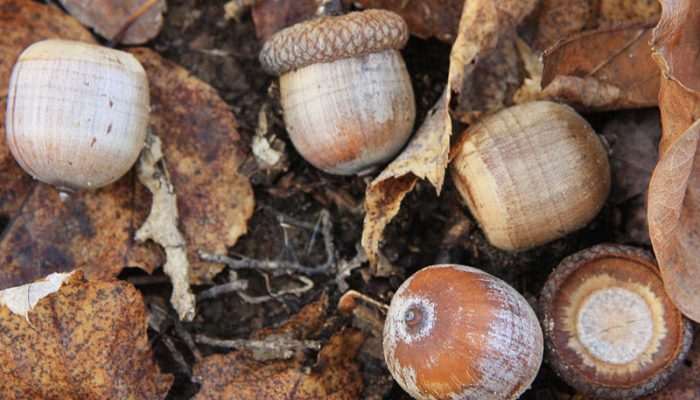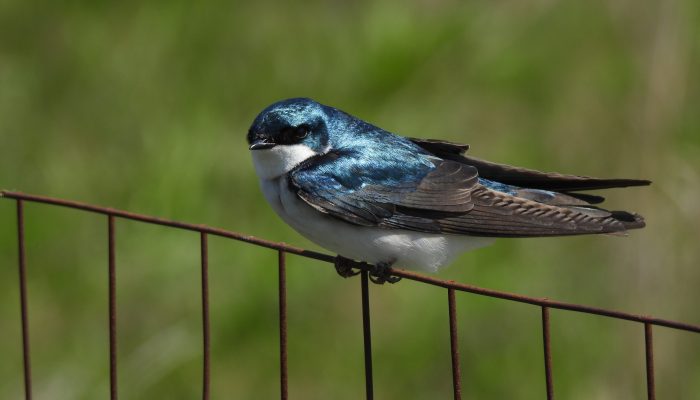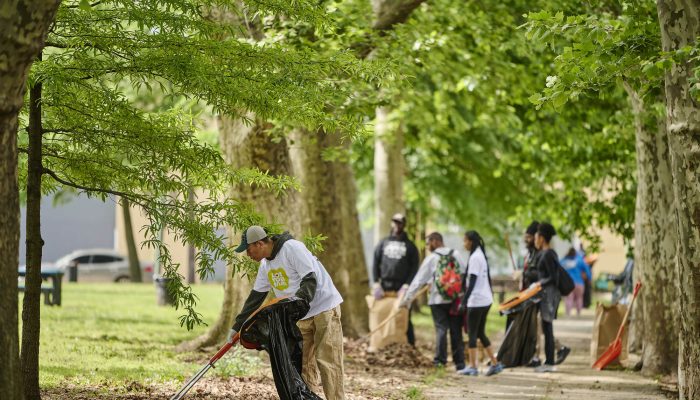By Tony Croasdale, Environmental Education Planner
Plants don’t have legs, or even fins or flippers. So how do they move? How do plants reach new areas?
There are a few ways plants move:
- Distributing their pollen through the wind or via a pollinator like a bee or hummingbird.
- Growing new plants from roots or stems (called vegetative reproduction)
- Dispersing their seeds to travel even farther more quickly.
You may be familiar with the wings of a maple seed or the parachute of a dandelion, which use wind power to travel. Other examples of plants that travel include:
- Coconuts that float to new islands on the water.
- Jewelweed and jumpseed, which have structures that store kinetic energy to shoot their seeds away from the parent plant.
- Cockleburs and beggars ticks, which are seeds that hitch rides on mammal fur, or your pants!
A few types of trees in our area have evolved a different strategy.
Fall is a great time to take a walk in the woods to see this strategy in action. You’ll see gray squirrels, eastern chipmunks, blue jays, and other animals hard at work. They’re rushing to collect and store acorns and beech nuts for the winter. These nuts are seeds which, if left on the ground, could grow into a new tree. Animals that collect nuts are “seed predators.” They’re called predators because they kill the seeds when they eat them. This prevents the seeds from becoming new trees. This might seem like a problem for the trees’ chances of survival. Instead, this is an evolved strategy that actually helps distribute seeds.
Oaks, beeches, hickories, and chestnuts produce massive amounts of nuts to overwhelm seed predators. This is called “masting.” While seeds are produced every year, some years produce significantly more mast than others.
Masting is a method of seed dispersal called “predator satiation” or “predator saturation.” Squirrels and jays cannot eat all the seeds. Squirrels and jays will store the seeds. Some of those animals will forget where they stored them, or die, never to reclaim their stash. These seeds are then able to germinate into seedlings.
Our forests have many species of masting trees including:
- white oaks
- northern red oaks
- pin oaks
- shag-bark hickory
- American beech.
Our region used to have another important masting species – the American chestnut. This was once the largest tree species on the East Coast. Chestnuts comprised up to 50% of the individual trees in a forest. A disease called chestnut blight wiped out American chestnuts. The disease spread from European chestnuts brought to this country. Some American chestnut trees still sprout from old root systems in our parks. When they reach a certain size, the disease causes cankers that kill the tree.
Much of our native wildlife depends on masting trees. Luckily, we still have enough oaks, beeches, and hickories to sustain them. If you want to see wildlife gathering mast, visit areas with large mature trees, like Haddington Woods in Cobbs Creek Park, Pennypack Park, or Wissahickon Valley Park.




